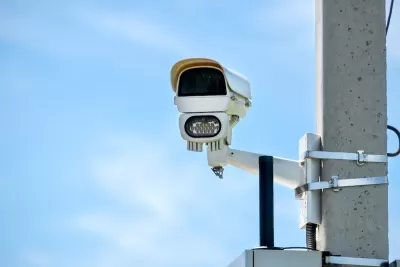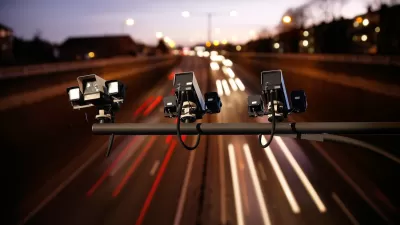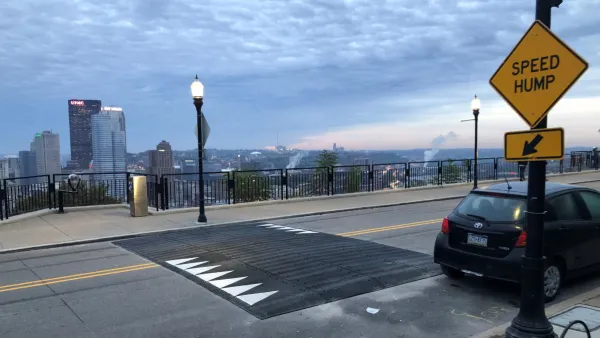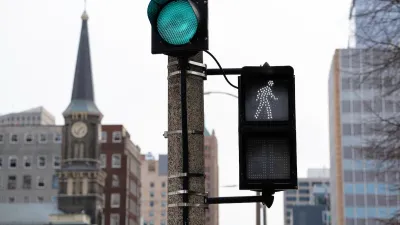Excessive speeding along dangerous segments of Roosevelt Boulevard dropped by 90 percent after the city installed automated enforcement cameras.

Traffic fatalities were cut in half along a Philadelphia boulevard after the city installed automated speed cameras. Writing in Smart Cities Dive, Dan Zukowski notes that Roosevelt Boulevard also saw a 90 percent reduction in excessive speeding in the seven months since the cameras’ installation.
The 12-lane highway through densely populated neighborhoods in Northeast Philadelphia has a posted speed limit of 45 mph. A Streetlight Data analysis found that before speed cameras, the mean speed along one segment where there have been many fatal crashes was 51 mph at 8 a.m. on an average Tuesday.
The total number of crashes on the street fell by 36 percent in a year, while that number only fell by 6 percent across the entire city. While average speeds continue to decline along the segments with cameras, other parts of the boulevard continue to pose a threat to pedestrians, warranting additional safety improvements, according to an analysis by Streetlight Data. “In 2023 the state secured a $14.5 million federal grant that will go toward curb extensions, realigned crosswalks and lane configurations, improved traffic signals and new or renovated transit stops along Roosevelt Boulevard.”
FULL STORY: How Philadelphia cut crashes on one of its most dangerous roads

Planetizen Federal Action Tracker
A weekly monitor of how Trump’s orders and actions are impacting planners and planning in America.

Congressman Proposes Bill to Rename DC Metro “Trump Train”
The Make Autorail Great Again Act would withhold federal funding to the system until the Washington Metropolitan Area Transit Authority (WMATA), rebrands as the Washington Metropolitan Authority for Greater Access (WMAGA).

The Simple Legislative Tool Transforming Vacant Downtowns
In California, Michigan and Georgia, an easy win is bringing dollars — and delight — back to city centers.

Albuquerque’s Microtransit: A Planner’s Answer to Food Access Gaps
New microtransit vans in Albuquerque aim to close food access gaps by linking low-income areas to grocery stores, cutting travel times by 30 percent and offering planners a scalable model for equity-focused transit.

This City Will Pay You to Meet Your Neighbors
A North Kansas City grant program offers up to $400 for residents to throw neighborhood block parties.

Commentary: Our Silence Will Not Protect Us
Keeping our heads down and our language inoffensive is not the right response to the times we’re in. Solidarity and courage is.
Urban Design for Planners 1: Software Tools
This six-course series explores essential urban design concepts using open source software and equips planners with the tools they need to participate fully in the urban design process.
Planning for Universal Design
Learn the tools for implementing Universal Design in planning regulations.
Smith Gee Studio
City of Charlotte
City of Camden Redevelopment Agency
City of Astoria
Transportation Research & Education Center (TREC) at Portland State University
US High Speed Rail Association
City of Camden Redevelopment Agency
Municipality of Princeton (NJ)





























